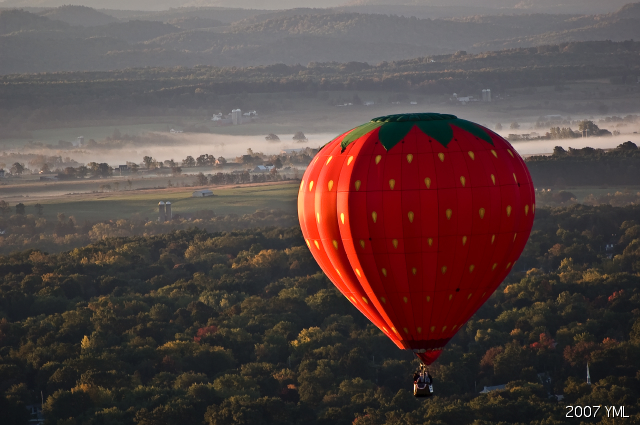DSLR stands for “Digital Single Lens Reflex.” To many photographers, it stands for power — the power of control and creativity.
[ad#Google Adsense 300×250 in story]I just got off the phone with “The Publisher” and he asked, “Why? Why are you doing a column on DSLRs? It’s a beginning digital photography column — beginners aren’t going to use these cameras, are they?”
First off, he’s right — the majority of people who take photographs, and certainly the vast majority of beginners, aren’t going to be using DSLRs. But just like car magazines do reviews of the latest Ferrari super car, it’s nice to know what the pros use and it gives you something to aspire to.
Secondly, I believe the point of this column is to help give you the wings to fly — to become such a good photographer that you will want or need to buy a new camera. Maybe that will be a DSLR and maybe this column will help you use it better and get better shots.
Thirdly, DSLRs can create and shoot images the iPhone or Point and Shoots simply can’t do. Maybe those are shots you’re not ever going to try and capture but it can be fun to talk about how to get them.
And finally, not all DSLR’s are $10,000 Nikons — many manufacturers make very nice consumer level DSLRs that are perfectly good for a dedicated beginner or a talented amateur.
For example, my first DSLR was a nice little Nikon D50 — relatively inexpensive at under $500 but still capable of using multiple lens (a huge strong point of DSLRs), running in many professional shooting modes (Manual, Aperture, Shutter — all modes we will talk about in the future) and have the speed of shooting and other functionality not available in P&S.
Olympus, Pentax, Canon, Nikon and many others all make great consumer priced DSLRs that can do an amazing arrange of things if you take the time and put in the energy to learn how to not only use the camera, but also how to take better photographs. The advantage of the latter is that the knowledge gained translates to any camera you’d use.
Let’s take a look at the kind of shots you can get with a DSLR.
Here’s a great shot (if I do say so myself):
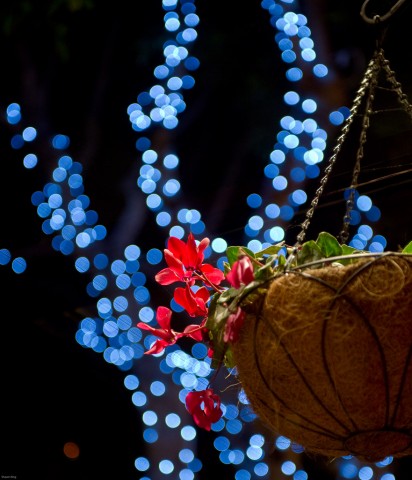
I love the colors, the soft focus and the composition. It’s also a special photo for me because it was taken on Valentine’s Day with my girlfriend next to me.
Is it a shot you could get with an iPhone or a P&S? Not a chance. That flower pot is on a light pole across the street from the restaurant we were sitting in! Not only is the image over 60 feet away, it’s shot through the glass of the restaurant’s windows. I’m leaving aside the fact it was shot with a $6,000 Nikon D3s attached to a $1,500 Nikon 24-70mm the nice folks at LensProToGo loaned me at last year’s Macworld Expo.
The same camera got this shot:

For those of you who are fans of the Angry Mac Bastards podcast, this is a shot of Darby Lines, doing what he does best — drinking. I like this shot for the lighting, the look on his face, the rings and the script “Darby” on the lower right (Darby uses this shot for his Twitter avatar).
This shot of the Silicon Valley Houserockers’ sax player was taken at the same party:
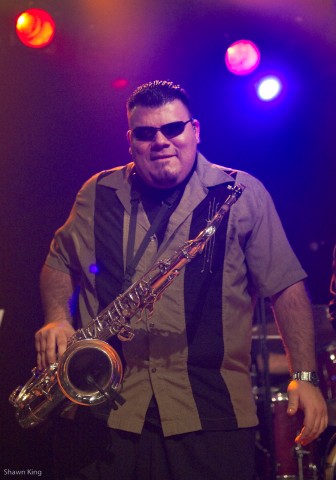
Again, not a chance you get these shots with an iPhone or a P&S. Both shots were taken in a very dark nightclub with no flash (a flash would have ruined the lighting of the images) and from 25 feet away (for those interested, the shot was taken handheld at 1/500 sec at f2.8 and ISO 12,800!).
One reason why a DSLR can get shots like this is the much higher quality lenses, glass and general construction of the average DSLR. Also, all digital cameras have a sensor, a little electronic brain, that does the heavy lifting of capturing the image. In general, the bigger the sensor, the more data it can capture and the better the image will be. DSLR sensors are massive in comparison to the iPhone and P&S.
Lenses and being able to switch them on and off the camera body can also help a DSLR get shots a P&S can’t get. I was lucky enough to go to the Tennis US Open in New York City a couple of years ago, thanks to Olympus. They loaned the media some great cameras and, because Olympus is a title sponsor, we got access to places others aren’t allowed to go – like the roof of Arthur Ashe Stadium.
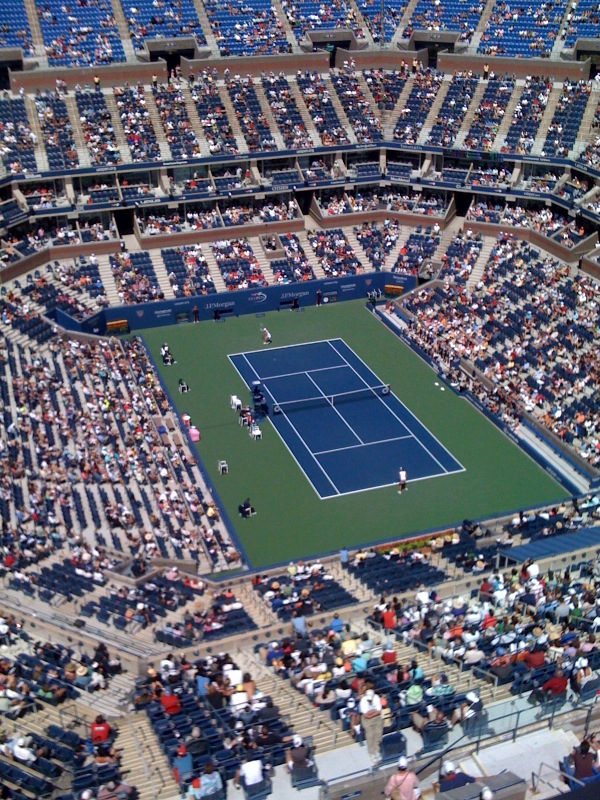
Granted, that is a shot you can easily get with any camera. But try zooming in this far:
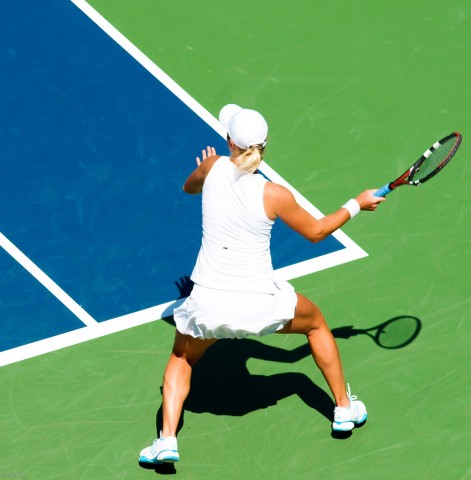
That shot is from the exact same spot as the previous image! Granted, I cheated and was using a $3,000 camera and a 600mm, $5,000 lens, but still.
But what makes a DSLR so much better than an iPhone or P&S are the exact same things that make it worse in a lot of situations. DSLRs are much bigger and heavier than any iPhone and the vast majority of P&S; the lens flexibility means you have to carry extra lenses around, necessitating some sort of storage for them; and DSLRs won’t fit in your pants pocket.
I’ll be honest — while I have a perfectly good DSLR, I rarely carry it around any more. Nowadays, I use it primarily to take shots I know I can’t get with a P&S or an iPhone — particular low light or high speed conditions or when I want to play around with “getting creative” with my shots.
This image is another example — and the first time I took a shot where I said to myself, “NOW I’m a photographer!” and the only photograph I’ve ever printed out and had framed.
The balloon was at least a quarter of a mile away, the sun was just coming up and we were moving in the opposite direction — all tough conditions to get a great shot with.
Another benefit of DSLRs is they can shoot in a different format, called RAW (available in some P&S too) that allows much greater flexibility in post-processing the image in Apple’s Aperture or Adobe’s Lightroom. Shooting in RAW allows you to tweak the the parameters of the image (colors, lighting, exposure, contrast, etc.) to really make it pop.
DSLRs are also faster in almost every aspect of their operation. We’ve all experienced the lack of speed of our iPhones — it takes at least three steps before the camera is ready to shoot. You point the camera at the image, push the shutter button and there is a very noticeable period of time before you hear the satisfying (and often, completely fake and electronic) sound of the shutter opening and closing.
Not only are DLSRs almost “instant on,” allowing you to get shots the iPhone would miss, they have little to no shutter lag — which means you can get shots the P&S would miss. DSLRs also have “Burst Mode” — the ability to take multiple shots in a very short period of time. Take a look at some of the shots on my US Open Flickr Set — the consecutive images of some of the players are shot in Burst Mode. The Nikon D3s I borrow can shoot 11 images per second.
There are many benefits to a DSLR — better images, speed, flexibility, creativity — but don’t even think about buying one if you are still using your P&S on Automatic Mode. You’ll be spending money for features that you’ll never use.
But it’s always fun to dream about using one of the Big Boys.

